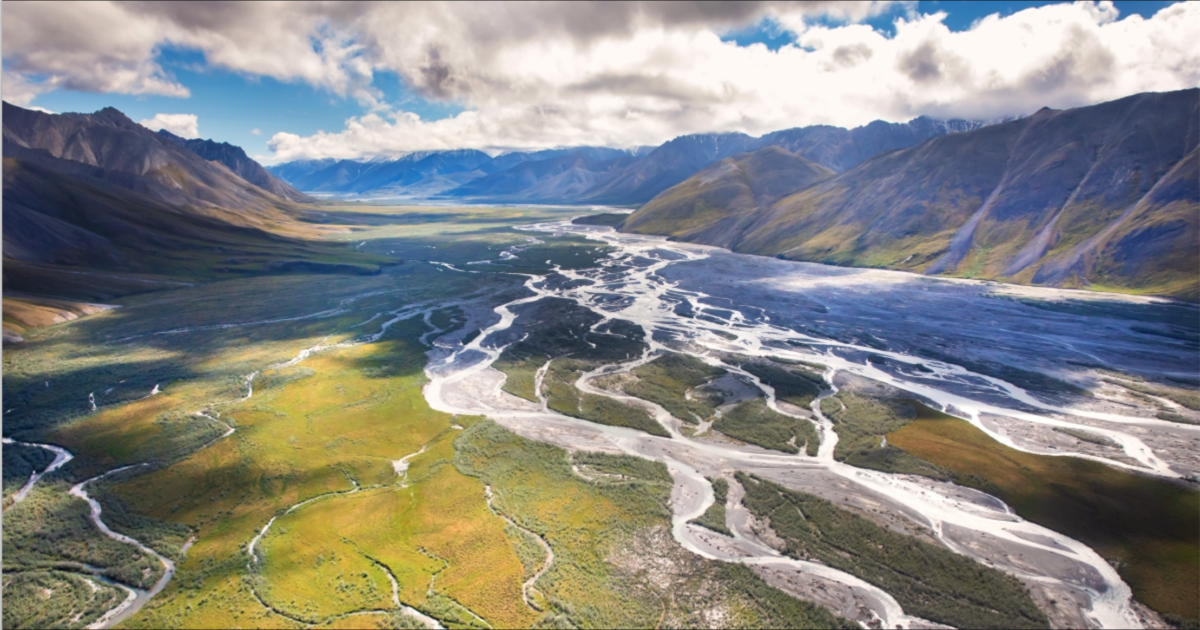The Big Picture –
By Glynn Wilson –
WASHINGTON, D.C. — I remember the first time I heard a presentation on the need to protect the Arctic National Wildlife Refuge in Alaska, administered by the U.S. Fish and Wildlife Service.
It was 1989, and an activist had traveled all the way from Alaska to Mobile, Alabama, to talk to a local environmental group about the issue. It was my first year as a full-time reporter for a chain of newspapers on the Gulf Coast covering the environment as a specialty beat.
The battle raged for years, and the refuge won protection under Republican and Democratic administrations, until Donald Trump was elected in a fluke election in 2016, when he rescinded those protections and opened the area for oil companies to drill for the first time.
But the Biden administration this week reversed that decision, and vowed to protect millions of acres of pristine Alaskan wilderness from oil and gas exploration by prohibiting drilling in 13 million acres of the National Petroleum Reserve and cancel all the existing leases in the Arctic National Wildlife Refuge.
The new regulations would ensure “maximum protections” for nearly half of the petroleum reserve, but it would not stop the enormous Willow oil drilling project in the same vicinity that President Biden approved this year, according to reporting by the New York Times.
The White House issued a statement announcing its position on Wednesday.
“Alaska is home to many of America’s most breathtaking natural wonders and culturally significant areas. As the climate crisis warms the Arctic more than twice as fast as the rest of the world, we have a responsibility to protect this treasured region for all ages,” the statement reads. “Canceling all remaining oil and gas leases issued under the previous administration in the Arctic Refuge and protecting more than 13 million acres in the Western Arctic will help preserve our Arctic lands and wildlife, while honoring the culture, history, and enduring wisdom of Alaska Natives who have lived on these lands since time immemorial.”
“From day one,” the president says, “I have delivered on the most ambitious climate and conservation agenda in our country’s history. But there is more to do, and my administration will continue to take bold action to meet the urgency of the climate crisis and to protect our lands and waters for generations to come.”
According to the Fish and Wildlife Service, a federal agency in the Department of the Interior, the Refuge sustains people, wildlife, and fish in the northeastern corner of Alaska, a vast landscape of rich cultural traditions and thriving ecological diversity. It is located on the traditional homelands of the Iñupiat and Gwichʼin peoples. Approximately the size of South Carolina, the refuge has no roads or facilities. The lands and waters are a critical home to migratory and resident wildlife, have unique recreational values, and contain the largest designated Wilderness within the National Wildlife Refuge System.
Environmental activists were angered by Biden’s decision to allow the Willow project, calling it a “carbon bomb.” Since then, the administration has taken pains to emphasize its efforts to reduce carbon emissions, a major driving factor in climate change due to global warming from the burning of fossil fuels for energy and transportation.
The refuge also sits atop an estimated 11 billion barrels of oil and, for years, the fossil fuel industry, members of the Alaskan congressional delegation and state leaders have lobbied for drilling. In 2017 Congress passed, and Trump signed, a tax law that not only authorized but required leasing for drilling in the wildlife refuge. The Trump administration held a lease sale that attracted just three bidders, including the Alaska Industrial Development and Export Authority, a state agency. Most of the major oil companies stayed on the sidelines.
On his first day in office, Biden signed an executive order halting Arctic drilling and in 2021 suspended the leases that had been granted by the Trump administration, citing problems with environmental reviews. Last month a federal judge rejected a challenge by the state of Alaska, saying the federal government had the authority to suspend the leases while it conducted an additional environmental analysis.
That review found “multiple legal deficiencies” in the analysis that had been conducted by the Trump administration.
Interior Secretary Deb Haaland said two of the leases in the refuge had been canceled and refunded at the request of the lease holders. The remaining leases held by the Alaska development authority covered about 365,000 acres in the coastal plain.
“There are some places where oil and gas drilling and industrial development simply do not belong,” Ms. Haaland said. “With today’s action, no one will have rights to drill for oil in one of the most sensitive landscapes on earth. Climate change is the crisis of our lifetime, and we cannot ignore the disproportionate impacts being felt in the Arctic.”
The Alaska Industrial Development and Export Authority, which sued to block the Biden administration from reconsidering the refuge leases, did not respond to a request for comment.
A federal judge dismissed the challenge in August and said the government could pause the leases while it conducted an additional review.
Chris Wood, the president of Trout Unlimited, an environmental group, called the protections for the National Petroleum Reserve Alaska “one of the most significant conservation achievements of the past 20 years.”
John Leshy, a public lands expert who served in the Interior Department during the Carter and Clinton administrations, noted that the state had been the only remaining leaseholder in the refuge. The Biden administration could have standing to cancel those leases, he said, if it found that environmental reviews and other compliance measures on the leases had been inadequate.
The state of Alaska “would doubtless contest that in court,” Mr. Leshy said. He added that the outcome was not predictable.
“The bigger picture here is that no one but the state sees any future in drilling the refuge,” he said.
No doubt more oil companies would like to get into the area to drill, but considering the state of the oil and gas market and the expense of reaching the area, there is no great push back against the Biden administration’s decision.
___
If you support truth in reporting with no paywall, and fearless writing with no popup ads or sponsored content, consider making a contribution today with GoFundMe or Patreon or PayPal. We just tell it like it is, no sensational clickbait or pretentious BS.














